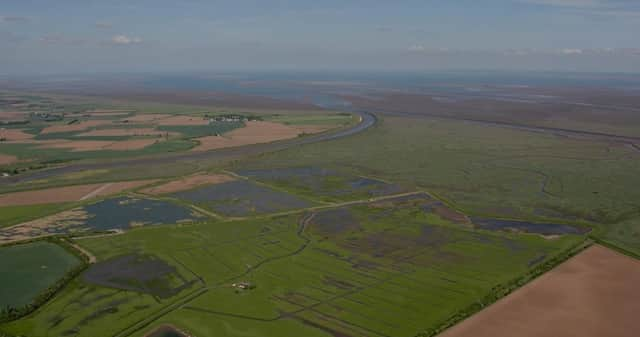Lincolnshire coast launches bid to become Natural World Heritage site
This article contains affiliate links. We may earn a small commission on items purchased through this article, but that does not affect our editorial judgement.


The application refers to the east coast wetlands, spanning habitats from the Humber to the Thames, and comes after the publication of a new report which indicates the essential role the east coast wetlands play for migratory birds.
The recent review, authored by marine and coastal habitat consultants ABPmer, concluded that the English east coast is of ‘outstanding universal value’ due to the world class network of coastal wetlands which support globally important migratory bird populations.
Advertisement
Hide AdAdvertisement
Hide AdFigures collated in the report indicate that around one million birds are reliant on the east coast each winter, using the unique shores and inland marshes to shelter from the harsh conditions in Scandinavia, Canada, Greenland and Siberia.
In the spring, the coast fills with around 200,000 migrating and breeding birds, and in the autumn, around 700,000 birds make the area home.
The shorelines provide a rich buffet of invertebrates which bird species rely on in the winter months and refuel on in the spring and autumn as they make a pitstop on their migratory journeys.
Further from the shoreline, marshes offer valuable roosting sites and refuges for birds at high tide, as well as nesting grounds.
Advertisement
Hide AdAdvertisement
Hide AdThey also provide foraging and nursery grounds for fish and a wide range of other benefits for society, including carbon capture and storage, flood defence, recreation, tourism and fisheries.
In total, the report shows that the east coast wetlands support over 155 different bird species. Of these, 29 use the east coast in internationally important numbers, meaning they are dependent on the wetlands for their survival. These include knot, black-tailed godwit, dark-bellied brent geese and bar-tailed godwit, many of which are already of conservation concern.
Chris Miller, Head of Environment, Lincolnshire County Council, said: “We’re thrilled to see the results of the report which evidences how essential the coastal wetlands between the Humber and The Thames are for nature and the role they play for our coastal communities. We have given our full support to the application for these wetlands to be added to the UK’s Tentative List, which will provide the time and space needed to discuss and plan how best to bring forward any future nomination as a Natural World Heritage site.”
Currently, there are just two Natural World Heritage sites in the UK; Dorset and East Devon Coast and the Giant’s Causeway and Causeway Coast.
Advertisement
Hide AdAdvertisement
Hide AdIf accepted, the east coast could join this list which also includes some of the world’s most iconic sites, such as the Great Barrier Reef, the Galapagos Islands and Mount Kilimanjaro.Steve Rowland, RSPB England Area Manager for Lincolnshire, said: “A wide range of species use the east coast as an essential home and as refuge during huge migration journeys.
"The Wash is the UK’s most important estuary for wild birds which depend on its mudflats to feed during their globe-spanning migrations. The spectacular sight of the thousands of wintering wild geese and shorebirds at RSPB Frampton Marsh, many of which are arriving now, surely ranks as one of the UK’s top wildlife spectacles.”
The application to join the UK’s Tentative List of Natural World Heritage sites has been submitted in response to the governments review of potential sites launched earlier this year. This list forms the basis of the UK’s World Heritage site nominations to UNESCO (United National Educational, Scientific and Cultural Organisation).
The east coast wetlands application has been initiated by the RSPB and endorsed by wider partners, including the National Trust, Wildfowl and Wetlands Trust, several Local Authorities and The Crown Estate.
Advertisement
Hide AdAdvertisement
Hide AdThe proposed boundary of the site is defined by existing nature conservation areas covering 170,000 hectares of coastline from the Humber estuary in the North to the Thames in the South.
Steve added: “While this is only the first stage in the journey to becoming a Natural World Heritage site, it’s incredible to think that the east coast is up there with some of the most important places for nature globally. We’re also carrying out projects that will help us to plan and manage for climate change and protect the coast – these are truly world leading solutions.”
A decision on whether the east coast wetlands will be added to the UK’s Tentative List is expected by early 2023.
To find out more about the east coast and to explore some of its vibrant habitats visit https://www.rspb.org.uk/reserves-and-events/reserves-a-z/frampton-marsh/